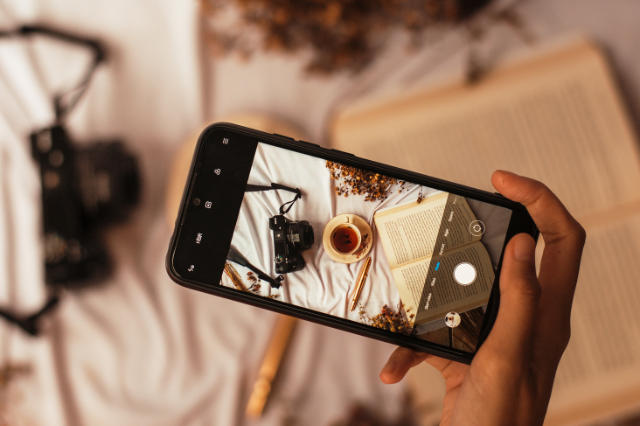
Does your smartphone have an amazing camera, but you aren’t exactly sure how to get the most out of it? Are your photos simply good, but you're yearning for them to be great? The good news is you can certainly tap into the features of your smartphone camera and turn your hand-held device into a quasi-professional camera. Leave no event or special moment undocumented in ordinary quality. Let's roll up our sleeves and dig into a world of unseen angles, perfect lighting, and breathtaking compositions.
Now, sit back and let's unfold the mystery behind clicking awe-inspiring images with a gadget that is always in your pocket!
First things first, don't underestimate the power of your smartphone camera. Believe it or not, with the right knowledge and a few tricks up your sleeve, you can capture images that are as stunning as those taken with a professional camera.
1. Lighting Matters
Never forget the prime rule - lighting is everything in photography. To capture grandeur, always pay attention to the source of light and its direction. The best times for photography are the 'Golden Hours' - the time just after sunrise and just before sunset. This is because the lighting during this period is soft, diffused, and warm, which adds a magical touch to your photos.
2. Framing and Composition
Did you know that how you frame your subjects can greatly impact the quality of your photo? A simple mantra here is to use the 'Rule of Thirds'. Divide your frame into a 3x3 grid and try to position your subject along those lines or at the intersections. This technique usually creates more interest and balances the photo, making it more pleasing to the eye.
Tip: On most smartphones, you can activate the gridlines feature in the camera settings.
3. Focus and Exposure
Tap on your point of interest on the screen to make sure it's in focus. On most smartphones, this will also automatically adjust the exposure, making the image neither too bright nor too dark. However, in challenging light conditions, you might have to manually adjust the exposure by sliding your finger up or down on the screen after focusing.
4. Ditch the Zoom
As tempting as it may seem, avoid using digital zoom. Although this feature brings distant objects closer to sight, it often results in pixelated or blurry images. Instead, try to get closer to the subject or photograph it from a distance for a more interesting perspective.
5. Experiment with Different Modes and Features
Your smartphone camera is probably loaded with multiple modes and features, like Portrait, Panorama, Slow Motion, Time-Lapse, and more. Don't hesitate to experiment with these and discover exciting new ways to enhance your photography skills.
To conclude, the secret to capturing stunning photos isn't just about owning an expensive camera but understanding the basic rules of photography and applying them whilst using your smartphone. With a little bit of effort, you will be amazed at what you can achieve.
Let's delve into some key tips and strategies to take your mobile phone photography to the next level:
Understanding your camera settings: The first step towards taking better photos is getting to know your smartphone camera and the different settings it provides. Play with the exposure, focus, white balance, and ISO. These settings can significantly influence the final outcome of your photos. Experiment with them in different lighting conditions and observe the changes they bring to your images.
Use the rule of thirds: This is a basic rule in photography where the frame is divided into a 3x3 grid. The interesting elements of your shot should align with these lines or their intersecting points to create a balanced and engaging composition. Most smartphone cameras will have the grid option. Just go to your camera settings and enable it.
- Focus on lighting: Lighting plays a key role in photography. Learn to use natural light to your advantage. Try shooting during the golden hours(early morning or late afternoon) for beautiful soft light and longer shadows. Avoid shooting in harsh midday light, which can cause blown-out highlights and strong shadows.
- Keep it simple: 'Less is more' often holds true in photography. A simple composition allows your subject to stand out. Avoid too many distracting elements that can clutter your shot. Focus on one subject and use negative space effectively to draw attention to it.
- Clean your lens: Ensure your smartphone camera lens is clean. Smudges and dust on the lens can affect your image quality. Give it a quick wipe before you start shooting.
Editing: A bit of post-processing can help enhance your photos. There are several powerful editing apps available that can help you adjust the brightness, contrast, saturation, highlights, shadows, and more. But remember, a great photo is made at the time of capture, not in post-processing. So, focus on getting it right in-camera first.
These are just a few fundamental tips. Photography as an art is all about exploring and experimenting. So, pick up your smartphone, start clicking, and watch your photography skills grow!


